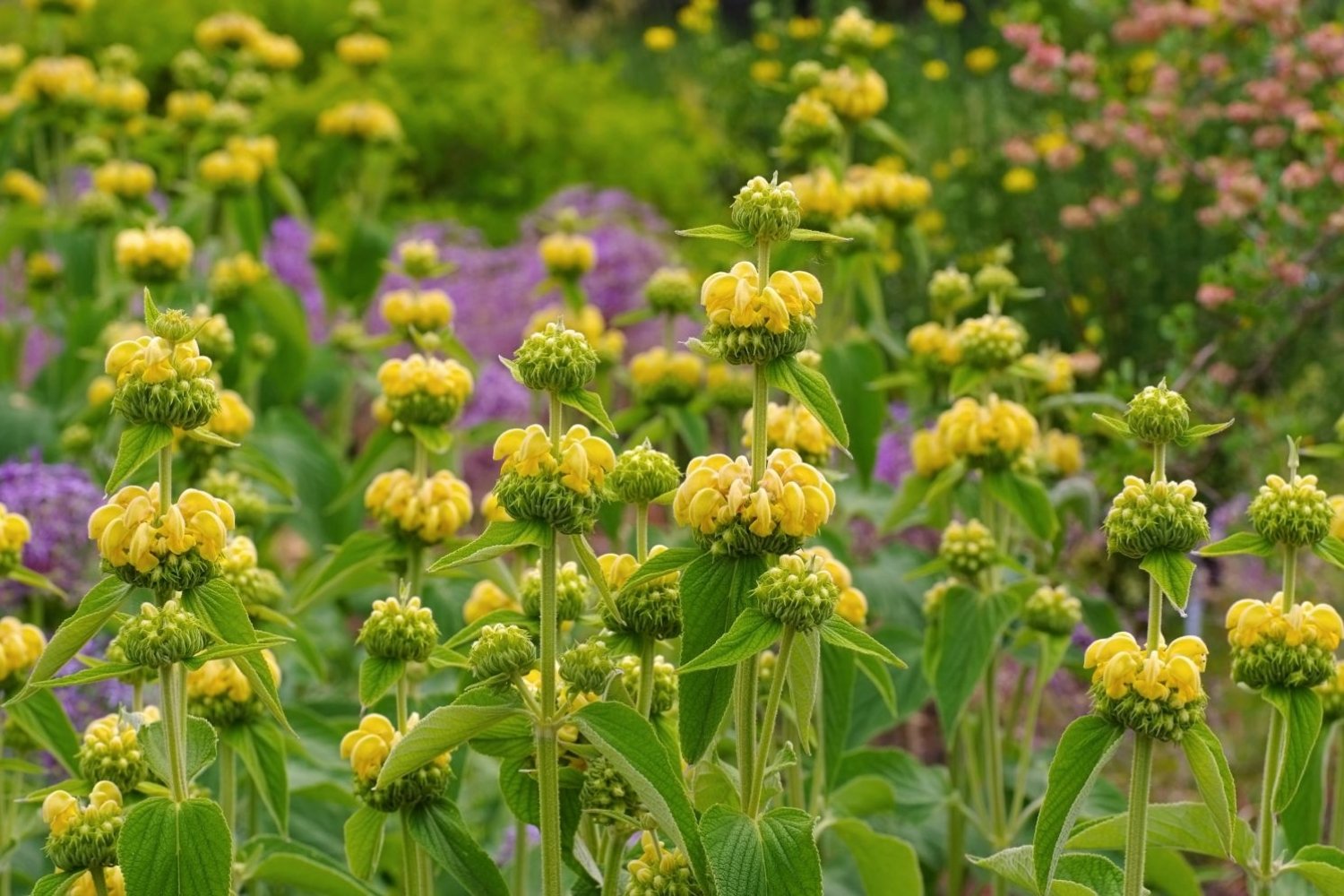
Phlomis, often called Jerusalem Sage, is a fascinating plant genus that deserves more attention. Did you know that there are over 100 species of Phlomis? These plants are native to regions stretching from the Mediterranean to Central Asia. Phlomis is not just a pretty face; it has practical uses too. Historically, its leaves were used for making wicks in oil lamps. Gardeners love Phlomis for its drought tolerance and ability to attract pollinators like bees and butterflies. Ever wondered why Phlomis leaves are so fuzzy? This unique feature helps the plant retain moisture and protect itself from harsh sunlight. Whether you’re a gardening enthusiast or just curious about unique plants, Phlomis offers something intriguing for everyone.
What is Phlomis?
Phlomis, commonly known as Jerusalem Sage, is a genus of over 100 species of perennial herbs and shrubs. These plants are native to the Mediterranean region and parts of Asia. Known for their unique appearance and resilience, Phlomis plants are a favorite among gardeners and botanists alike.
- Phlomis plants belong to the mint family, Lamiaceae.
- The name "Phlomis" is derived from the Greek word for flame, referencing the plant's woolly leaves.
- Jerusalem Sage is not actually a sage but shares some similar characteristics.
- These plants are drought-tolerant, making them ideal for xeriscaping.
- Phlomis flowers are typically yellow, pink, or purple.
Unique Characteristics of Phlomis
Phlomis plants have several distinctive features that set them apart from other garden plants. Their unique foliage and flower structures make them a standout in any landscape.
- The leaves of Phlomis are often woolly or hairy, providing a unique texture.
- Phlomis flowers grow in whorls along the stem, creating a tiered effect.
- The plant's stems are square, a common trait in the mint family.
- Phlomis can grow up to 1.5 meters tall, depending on the species.
- The flowers attract pollinators like bees and butterflies.
Growing Phlomis in Your Garden
Phlomis plants are relatively easy to grow and maintain, making them a popular choice for gardeners. Here are some tips and facts about cultivating these resilient plants.
- Phlomis prefers well-drained soil and full sun.
- These plants are hardy in USDA zones 6-10.
- Phlomis can tolerate poor soil conditions, including sandy and rocky soils.
- Once established, Phlomis requires minimal watering.
- Pruning after flowering can encourage bushier growth.
Medicinal and Practical Uses of Phlomis
Beyond their ornamental value, Phlomis plants have been used for various practical and medicinal purposes throughout history.
- In traditional medicine, Phlomis has been used to treat respiratory issues.
- The leaves can be used to make a soothing herbal tea.
- Some species of Phlomis have antibacterial properties.
- The woolly leaves were historically used as wicks for oil lamps.
- Phlomis has been used in traditional dyeing processes.
Interesting Facts About Phlomis Species
Each species of Phlomis has its own unique traits and characteristics. Here are some fascinating facts about different species within this diverse genus.
- Phlomis fruticosa, or Jerusalem Sage, is one of the most popular species in gardens.
- Phlomis russeliana, also known as Turkish Sage, is known for its large, heart-shaped leaves.
- Phlomis tuberosa produces tubers that can be eaten.
- Phlomis italica, or Balearic Island Sage, has striking pink flowers.
- Phlomis purpurea, or Purple Jerusalem Sage, is native to Spain and has vibrant purple flowers.
Phlomis in the Wild
Phlomis plants are not just garden favorites; they also play a significant role in their natural habitats. These plants contribute to the biodiversity and ecological balance of their native regions.
- Phlomis species are commonly found in Mediterranean scrublands.
- These plants provide habitat and food for various wildlife species.
- Phlomis helps prevent soil erosion with its extensive root system.
Final Thoughts on Phlomis
Phlomis, often called Jerusalem Sage, is more than just a pretty plant. Its medicinal properties and pollinator-friendly nature make it a garden favorite. This hardy perennial thrives in various climates, needing minimal care while offering year-round beauty. Its unique foliage and vibrant flowers attract bees and butterflies, boosting your garden's health. Whether you're a seasoned gardener or a newbie, Phlomis is a fantastic addition. It’s not just about looks; this plant has a rich history and practical uses. From traditional medicine to modern landscaping, Phlomis proves its worth. So, next time you’re planning your garden, consider adding this versatile plant. You’ll enjoy its beauty and benefits for years to come. Happy gardening!
Was this page helpful?
Our commitment to delivering trustworthy and engaging content is at the heart of what we do. Each fact on our site is contributed by real users like you, bringing a wealth of diverse insights and information. To ensure the highest standards of accuracy and reliability, our dedicated editors meticulously review each submission. This process guarantees that the facts we share are not only fascinating but also credible. Trust in our commitment to quality and authenticity as you explore and learn with us.
